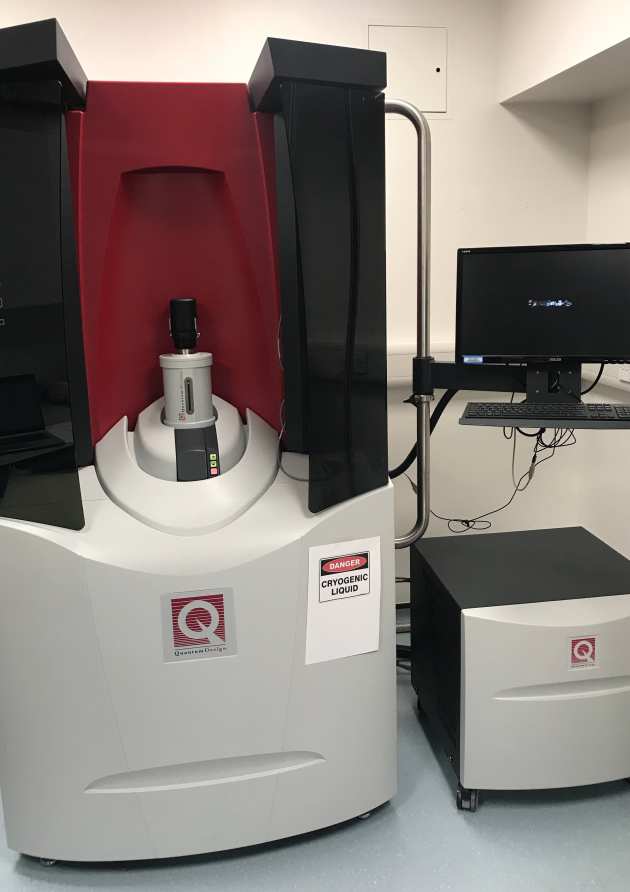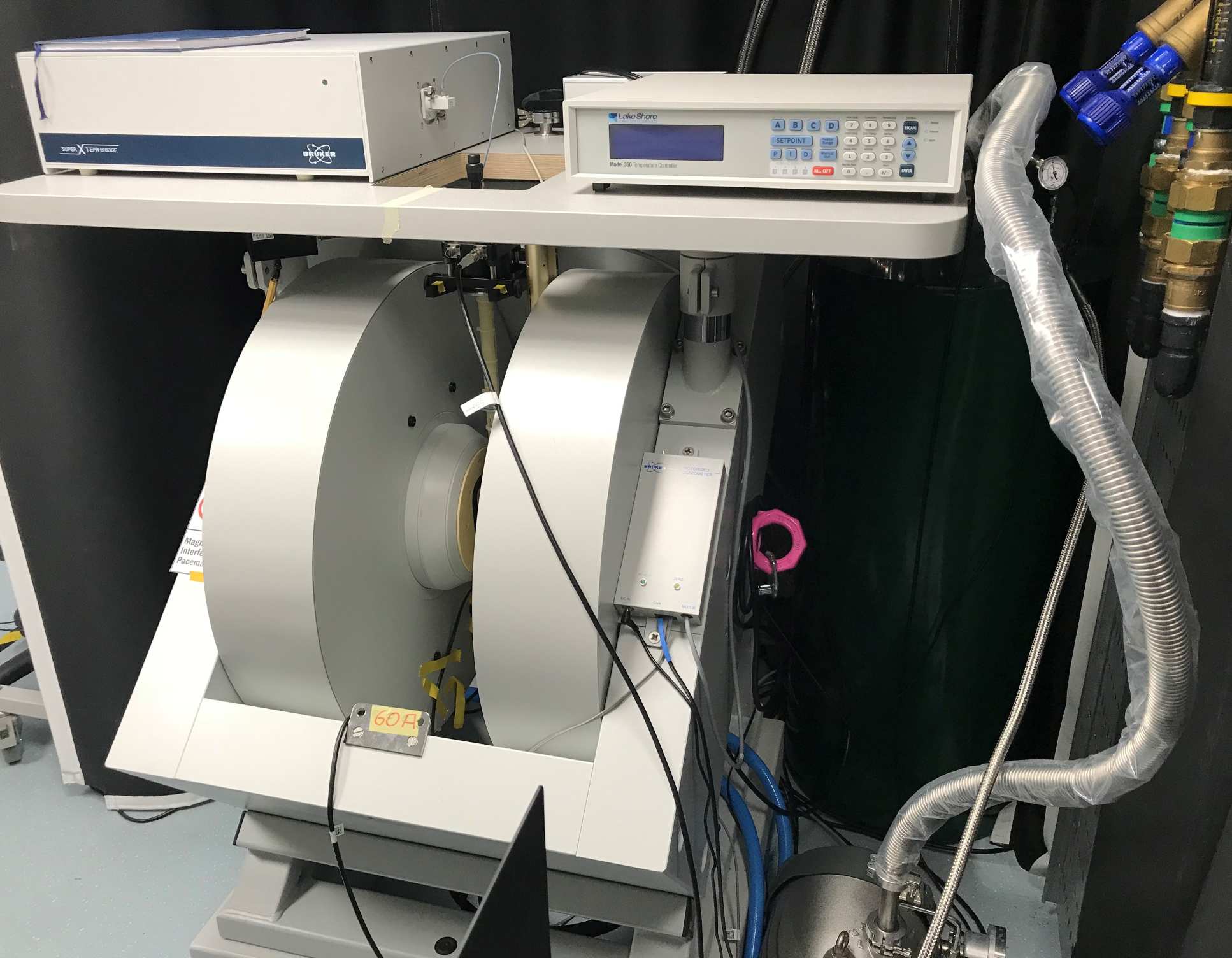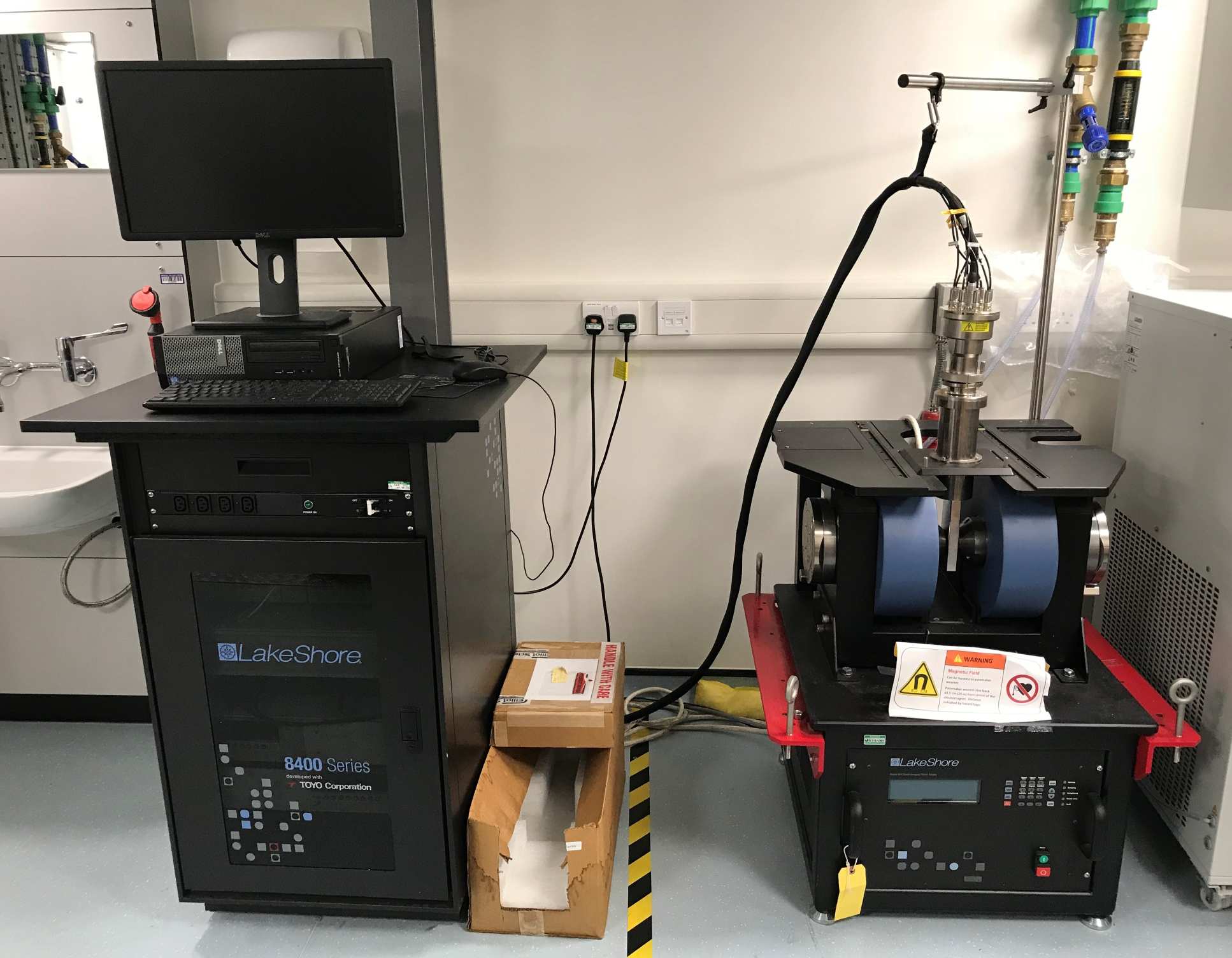Equipment
SPIN-Lab includes a wide range of equipment to study and manipulate spins.
Equipment
SQUID Magnetometer
Magnetic Property Measurement System (MPMS) based on Superconducting Quantum Interference Device (SQUID) technology enables highly sensitive magnetic measurements under variable conditions. Quantum Design Ltd MPMS3 7 Tesla magnetometer, which can be found in the SPIN-Lab, operates in cryogen-free mode. This valuable option ensures sustainability, efficiency, stability and ease of use.

The MPMS3 is the latest generation of highest sensitivity MPMS magnetometers. This system has more than two orders of magnitude higher sensitivity than vibration-based systems.
In addition to increased sensitivity it enables stable low-temperature measurements down to 1.8 K. Additionally, it has a range of options making it unique in the UK:
EPR spectrometer
Electron Paramagnetic Resonance (EPR) spectroscopy is a technique which probes the environment of unpaired electron in materials. From the interaction between unpaired electron and surrounding nuclei quantitative and structural information about the material can be obtained. It is particularly useful for studying metal complexes or organic radicals.
The EPR spectrometer in the SPIN-Lab is the Bruker X-Band (9.5-9.9 GHz) continuous-way (CW) ELEXSYS E500 system. The CW operation enables high sensitivity down to 1.0 x 109 spins. The spectrometer is fitted with a 1.45 T magnet and an optical access.
The system is equipped with Cryogen-Free Variable Temperature Cryostat (CF-VTC) allowing stable measurements between 1.8K and 300 K with typical stability of ±10 mK. Two EPR resonators are available, Selected Super High Sensitivity and Flexline resonator (ER4118X-MD-5W). Both provide optical access and can be used in combination with a 20 Hz Q-switched Nd:YAG laser. The laser has OPO system for broadband operation between 210 and 2750 nm with 50 mJ/pulse @355 nm. The combination of EPR system and laser enable the study of transient phenomena. Additionally, both resonators have goniometers to accurately set the rotational angle of samples.

Collaboration equipment/Add-ons
Hall Effect System
Hall effect measurement system gives information about the mobility, charge carriers concentration and resistivity of materials. The Lake Shore 8400 series Hall Effect system available in the SPIN-Lab enables the measurement of mobilities to 0.001 cm2/V s. It is equipped with the variable temperature stage which allows seamless measurements between 10 K and 1230 K, without the need to exchange sample stage. With the high resistivity module, the system can measure up to 200 GΩ for DC measurements and 8 GΩ for AC measurements.
This provides insight into fundamental mechanisms of charge transport in a wide variety of semiconducting materials and applications types, including organics, oxides (e.g. for batteries), carbon nanotubes, etc.
Magnetic Force Microscopy (MFM)
A state-of-the-art Asylum MFP-3D is significantly improved with a Variable Field Module Option (VFM3). The VFM3 provides the MFP-3D AFM with a variable in-plane magnetic field ranging over at least +/- 7000 G. It is useful for magnetic force microscopy, conductance and other applications where the sample has a dependence on the applied tangential magnetic field.
Ferromagnetic resonance (FMR)
The NanOsc CryoFMR spectrometer is an add-on for an existing Quantum Design Physical Properties Measurement System (PPMS) operating between 4-400K, 0-8T field and 2-40 GHz frequency range.
Solid state nuclear magnetic resonance (ssNMR) spectroscopy
A BRUKER Efree 4 mm triple resonance (1H/13C/15N) 600 MHz MAS DVT Probe (standard probe) is available. This Magic Angle Spinning (MAS) probe for solid state NMR is suitable for a wide range of samples, for 600 MHz standard-bore magnets. A special coil configuration minimizes the electric field at the sample, and strongly reduces RF heating for dielectric samples. The probe is equipped with a 4 mm MAS system and is optimized for 13C and/or 15N observation with 1H high-power decoupling.



